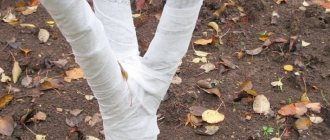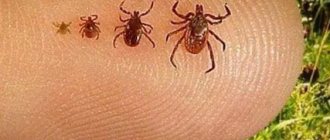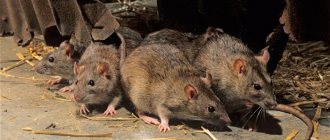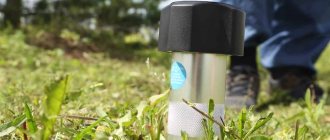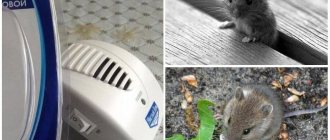In regions where there are large fields or forests nearby, orchards are subject to massive rodent attacks in winter. Animals do not spare either young or older trees, gnawing the bark, eating buds, young twigs, and undermining the roots. To preserve the garden, you need to make special structures.
We'll tell you which trees are most often attacked and how to protect them. If possible, we will consider all materials suitable for these purposes.
Which trees are at risk?
Hares and field mice, which most often attack gardens, have their own taste preferences, which is why some trees stand untouched, while others die from damage. For example, rodents attack pears only when there is absolutely nothing to eat, but apple trees, especially young ones, are in trouble.
The following trees are not attacked at all:
- apricots;
- cherry plum;
- plum;
- cherry;
- peaches.
The explanation here is simple: the bark of stone fruit species is very bitter, and it is impossible to eat it. However, there may be some minor damage from animals on these trees, but it is not life-threatening. It turns out that the closest attention should be paid to the protection of young apple trees.
Dangerous situation
In winter, rodents move to areas closer to people to find food. They become more active because it becomes cold in their natural habitats and there is a lack of food. Mice gnaw on the trunk, but most often damage only the bark; the trunk does not suffer much. But sometimes they undermine the roots of a plant, especially if they settle under it. Hares cause more damage and can chew through the cambium.
Trees usually recover on their own if only part of the bark is damaged. But severe damage to the tree is not able to heal. Damage to the cortex causes several problems:
- without external protection, the tree suffers from the cold;
- open wounds can contain harmful bacteria or fungal spores;
- If the cambium is damaged, the tree's nutritional procedure is disrupted.
Ways to protect an apple tree from rodents
Animals most actively attack gardens in February and March. This means that the chosen method of protection must be durable, resistant to prolonged humidity and winds. At the same time, you need to remember that under dense materials the bark can block, which is no better than damage from teeth.
To protect apple trees from hares you can use:
- soldered mesh with small cells;
- nylon reinforced mesh;
- plastic bottles tied together.
The height of the fences must be at least a meter.
You can save a tree from mice by tying it with old nylon tights, elastic tape, or spruce branches. You can try to deceive the animals by tying the tree with birch bark. Additionally, sources of pungent odors, bait poisons, and ultrasonic repellers are used.
The least expensive but effective method is to compact the snow around the tree trunk. The higher the layer, the better the protection.
Winding trunks
In most cases, soft materials are preferred. They are easy to use and cause less damage to the cortex. You can choose thick elastic fabric or polyethylene.
How to protect apple trees from mice in winter using this material? For convenience, it is better to cut the canvas into ribbons 20-25 cm wide. It is necessary to wrap the tree trunks so that there are no empty gaps left. Each subsequent turn needs to be slightly overlapped with the previous one. Such a margin will not allow the wind to unwind the covering material. It is secured on top with wire or rope at intervals of 15-20 cm.
To decide what to wrap an apple tree against mice for the winter, you need to take into account the number of trees in the garden. Buying agrofibre or film for a large garden can be very expensive. In this case, protective materials can be combined. For example, wrap some trees with roofing felt. Even spruce branches are used in gardening practice. They tie a standard with it, placing it with its branches down.
It is important to know that you need to use roofing felt correctly. The first layer must be wrapped with soft cloth or paper. The covering material should fit tightly to each other so that gaps do not form between them. Water can get into the voids, which will subsequently lead to icing of the trunk.
The structure of roofing material is quite dense and impenetrable, so with the onset of spring it must be removed immediately.
Protecting a tree from hares
It is impossible to frighten a hare with compacted snow - this animal, rising on its hind legs, can gnaw off the bark from the lower skeletal branches. To protect a tree from it, it is better to use natural features - a good sense of smell and timidity. Experienced gardeners simply tie black bags to the lower branches of young apple trees, which rustle even in the slightest wind and greatly frighten hares.
However, there are fearless individuals, and therefore the protection of the tree must be more thorough:
- make a chain-link fence;
- take old buckets, cut off the bottom, cut them lengthwise and put one on top of the other around the tree;
- hide the tree behind a soldered mesh.
Hares are capable of digging, so all structures need to be buried 30 cm into the ground. The height of the fences is at least 1.5 meters.
The long-eared pest can be scared away by a pungent odor; for this purpose, a talker is made. In the fall, mix clay with cow manure in equal parts, dilute with water to the consistency of sour cream, then add 50 g of kerosene per 10 liters of mash. The trunk and skeletal branches are coated with this composition using a brush. The mixture stays on the branches until spring and repels the hare with a pungent odor.
Mice also do not like such aromas and will avoid the tree.
How to wrap
The question of how to protect apple trees from winter hare raids must be decided in advance. If the method of wrapping trunks is chosen, the following preparatory work must be carried out:
- Wait for a certain period of weather conditions. The air temperature should remain at 10°C for several days. It is then that the movement of juices inside the trunk stops. If you do this much earlier, you can accidentally delay the development of shoots, especially in one-year-old seedlings. This will most likely lead to the death of the plant.
- After harvesting, carefully remove fallen leaves and branches within a meter radius around the tree.
- If traces of spoilage have formed on the bark, first remove the damaged areas, treat it with specialized compounds, treat it with lime, copper sulfate or Bordeaux mixture for antimicrobial purposes.
- Start wrapping by covering the root neck. For this purpose, materials are used that allow air to pass through well and do not interfere with the breathing of the roots. For example, a nylon stocking will do.
- Work continues to protect the trunk. If the selected material has an internal film, for example, sugar bags, it must be removed.
- Wrap gradually, trying not to make gaps, preferably in several layers. Agrofibre is considered a good material today. It is practical and reliable, preserves the ability of wood to breathe, but is not economically cheap.
- Wrapping is completed at the level of the lower branches, which can also be partially closed.
- It is worth creating supports around the tree in the garden to accumulate snow. This will create a snow cushion, with which the roots and root collar can be protected from the cold.
Wrapping the trunk of fruit trees to prevent hares from gnawing also plays another positive role. This is useful for the purpose of protecting against ice cover on the crust.
Protecting seedlings from mice
It is difficult to protect a tree from mice mechanically - these animals use the slightest cracks, dig tunnels, fearlessly climb to any height, and therefore are able to overcome fences made of mesh or boards.
Sheets of perforated iron can save you, but they are hard to get, and their cost is not low. Therefore, it is best to try to scare away the animals with a pungent odor:
- soak the sawdust with a solution of creolin or carbolic acid (50 g per 10 liters of water) and spread it over the entire area of the tree trunk, covering it with spunbond in snowless winters;
- grow cilantro (coriander), dry it, tie it in bunches and tie the most valuable seedlings with them;
- tie the trunks with young spruce branches.
Grandma's old method gives good results. Unnecessary nylon tights or stockings are wrapped tightly around the trunk and main branches, secured with twine and generously soaked in kerosene (you can also use diesel fuel). Not a single lover of young bark can overcome such protection.
Some gardeners wrap apple trees with roofing felt. Indeed, this is good protection against rodents, but it has two significant drawbacks.
The first is that roofing felt does not allow air to pass through, and the tree needs it even in winter, during hibernation.
Second, roofing felt quickly heats up from the sun. At the time of the thaw, the temperature under protection will rise so much that sap flow in the cambium will begin. Once temperatures drop below freezing, the tree may die due to extensive peeling of the bark.
Roofing felt protection can be used, but then it must be removed from time to time, which can be difficult on large or remote farms.
To avoid attracting rodents in winter, do not use straw for mulching.
Seasonal treatments are an integral part of rodent control
Autumn work in the garden also involves treating fruit trees with rodent repellent preparations. If you follow all the recommendations, you can achieve success without additional shelters, because special preparations will already scare away uninvited guests.
- Copper sulfate. After the leaf mass has fallen, the bare tree is treated with a one percent solution of copper sulfate, spraying the trunk and branches.
- Bordeaux mixture. After the first frost, apple trees are treated with a solution of Bordeaux mixture.
- Sanlizol. Sawdust treated with a solution of sanlisol are the main components of the mulch layer located in the tree trunk circle.
- Naphthalene and fish oil. The branches of young trees can be lubricated with an oil mixture of fish oil and naphthalene.
Rodents on a property are a big problem that should not be left to chance, as the consequences can be very dire. Choose several methods and experiment, because only by trial can you find out what will help you.
Join our Facebook group
Protecting the slate apple tree from rodents
An apple tree in a slate culture, due to the location of the tree relative to the ground, is more susceptible to attack by rodents than one grown in the usual form. However, it can also be protected from the attacks of these animals, only a little more material is required.
- Under the crown, you can arrange cilantro, elderberry or wild rosemary in heaps.
- You can make a mound of sawdust soaked in creolin or other harsh substance.
- You can lay out plastic bottles with potent poison.
Slate apple trees can be protected from hares by covering them with a metal mesh, and to prevent it from sagging, some gardeners make arches from pipes or fittings. Only in this case, the mesh needs to be buried 30 cm so that hares and rabbits do not dig under it.
Scaring away is a safe option
Various rodent repellents are good for summer cottages. After all, even in ancient times, bird-scaring structures were placed in the fields.
- Dark plastic bags. Hang used bags on the lower branches of the tree. When there are gusts of wind, they will sway and create rustling sounds that will scare away rodents.
- Black cardboard circles. The color of black cardboard will be clearly visible on white snow. The wind will shake the hanging black paper boxes and the hares will not go to the tree.
- Cans. Make holes in the tin can and, using a rope threaded through the hole, hang it on a branch. Several cans will emit loud noises when they touch, which will scare away uninvited guests.
- Bright fabric ribbons. The garden plot will look whimsical if multi-colored ribbons are tied to the lower branches. By hesitating, they will also repel rodents.
- Plastic bottles. Tied bottles with holes and mothballs placed in them can protect trees from attacks by hares and wild rabbits.
What to do with a damaged tree
Unfortunately, it happens that despite all efforts, mice or hares still spoil the tree, gnawing the bark or damaging the fruit buds. In some cases, the tree can be saved, but help cannot be delayed.
- Cover all minor damage with garden pitch or clay with cow dung.
- Serious damage can be lubricated 3 times a day with a mixture of sunflower oil and tar, and within a month the bark will recover.
- If the damage is very serious, you can cut down the apple tree, moving 2-3 cm away from the bud. A new shoot will begin to grow in this place, and after a few years a full-fledged apple tree will form from it.
A lotion with linden decoction gives a good result in terms of restoring the bark. To prepare it, boil 200 g of linden bark with a liter of water for 40 minutes. The strained broth is used to moisten bandages or cotton rags, which are tied around the bare branches and trunk, and thick paper is placed on top. According to gardeners, within a month the apple tree will be covered with a thin layer of young bark and will not disappear. This method works if the cambium is not damaged.
In the case of ring damage to the bark, lotions and garden pitch will not help. You can try to save the tree by grafting a bridge, which allows the sap to be transferred bypassing the damaged area. To do this, use cuttings harvested in the middle part of the crown. One end is grafted to the bottom of the wound, the other to the top. The technique is quite complicated, but you can try to save the tree.
Lures
Laying out baits containing poisons is an effective method. For example, Efa is a well-known effective pesticide against mice and rats. Thanks to the properties of the latest generation active substance, rodents only need to eat the bait once or twice to receive a lethal dose. Pour 5–10 g (1–2 tsp) of Efa bait onto cardboard or polyethylene and place it both in rodent burrows and on the soil surface near tree trunks. Bait must be added as it is eaten. The death of rodents occurs a few days after eating the bait.
Trampling and redistributing snow
In order for rodents to get close to such tasty plants - bulbs planted in flower beds and garden beds, bushes and trees - they must make their way through the snow and freely dig a hole or passage. The simplest measure available in winter - trampling down snow - creates a barrier for rodents that is sufficient for effective protection.
They trample down the snow, moving from the perimeter of the tree trunk circles to the trunk, in flower beds - between the plants, trying not to touch them.
A blanket of snow rarely covers the garden evenly, and snow periods are not stable. Effective redistribution of snow and additional snow cover of flower beds, ridges, protection of wintering shrubs and trees allows you to stabilize temperatures and use the best natural protection wisely, strengthening the barrier for rodents.
Snow is always distributed so that the most vulnerable plants are securely covered, and bare soil is protected from weathering and freezing. In addition, you need to add snow so that in the spring it effectively moistens the soil.
By finishing each snow distribution by compacting it near rodent-attracting plants, you reduce the risk of rodent problems.
Last resorts are always at hand
Regardless of the autumn preparations, it is worth stocking up on drugs or repellents and poisoned baits for rodents for the winter. Environmental and chemical, they will help you quickly take measures to protect crops and plants in case of violation of shelters or insufficient effectiveness of basic means.
What could it be? Elderberry tincture or tar, creolin, ammonia, diesel fuel, special preparations that are mixed with flour and grain or ready-made mixtures for baits... Among the large assortment presented in garden centers and hypermarkets for the winter, it is worth choosing at least one “emergency control” option.
It is enough to take with you or prepare in advance a supply of unnecessary rags, cotton pads or foam rubber and 1-2 products with which they can be soaked. While inspecting shelters and storage areas, if traces of the activity of voles are noticed, you should immediately resort to additional means, devoting time to passages and burrows, evenly distributing rags and containers with bait.
Repellers are placed directly around the plant or storage area, but baits with poisons are placed in such a way as to take rodents as far as possible from the crop and plants.
